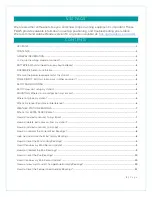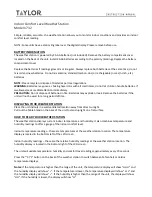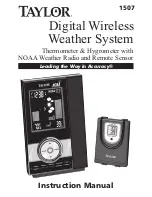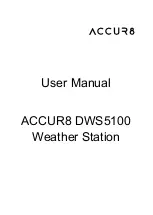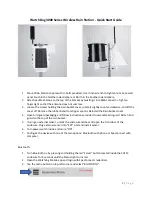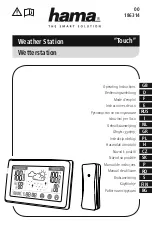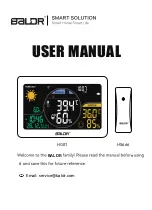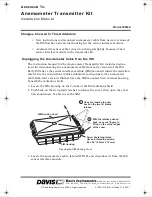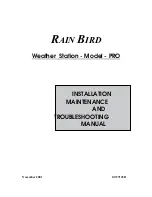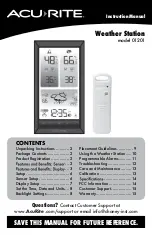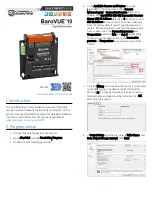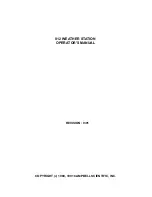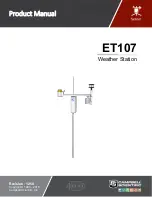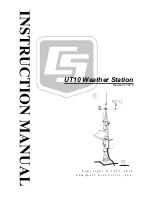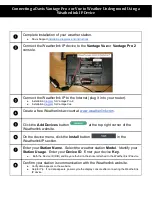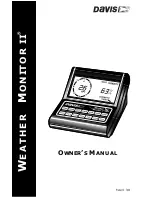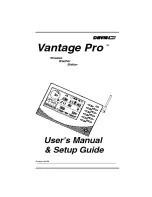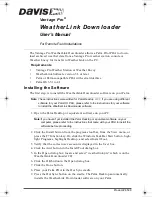
GAMMA
instabus
Technical Product Information
February 2019
Weather Station (GPS) AP 257/22
5WG1 257-3AB22
Siemens Switzerland Ltd
DS01
Update: http://www.siemens.de/gamma-td
Building Technologies Division
International Headquarters
Theilerstrasse 1a
Siemens AG 2019
CH-6300 Zug
Subject to change
1
Product and Applications Description
The AP 257/22 weather station (GPS) contains all sen-
sors, electronic systems for weather data analysis and
the bus coupler in one compact enclosure. It measures
wind speed, brightness and temperature, detects dusk /
dawn and precipitation and receives the GPS signal for
date and time.
Besides date and time, all measured values can be sent to
the bus in the EIS5 (DPT 9) format and each can be moni-
tored with up to 3 limit values. Limit values can be se-
lected as parameters or as communication objects. Per
day, the maximum wind speed, the maximum brightness
as well as the minimum and the maximum outside tem-
perature can be recorded and transmitted. The angles
(azimuth and elevation) at which the sun is shining can
be calculated from the date, the time of day and the
entered location coordinates, and can also be transmit-
ted via the bus.
The weather station not only allows for a simple solar
protection control, which activates or deactivates the
solar protection depending on whether the sun is shining
or not. It can also activate a solar protection control for
up to 8 façades. In this case, the solar protection of a
façade is automatically activated only when the sun
shines on the respective façade and is deactivated as
soon as this is no longer possible, or the sun is no longer
shining.
For each façade, this façade control can be supplement-
ed by a shadow edge tracking control of the solar protec-
tion and a sun tracking control of horizontal / vertical
slats.
With the shadow edge tracking control, the solar protec-
tion is not lowered completely but only so far that the
sun can still shine into the room for a certain distance
(e.g. 50 cm), which can be set by a parameter. This way
the occupant of the room can look outside in the lower
part of the window, and plants on the windowsill can
receive sunshine.
With externally mounted Venetian blinds, the sun track-
ing control of slats can avoid heat influx into the room
due to sunshine and at the same time reduce electricity
costs for room lighting. In this case the slats are not
completely closed but set to follow the position of the
sun and automatically arranged in such a way, that the
sun cannot shine directly into the room. Between the
slats, however, diffuse daylight can enter the room and
contribute to a glare-free lighting of the room.
Besides wind alarm, frost alarm and precipitation alarm
in total up to 8 alarm or error messages can be combined
using a logical OR function to create a “Safety” communi-
cation object, which, in case of an alarm, moves the solar
protection into its safety position.
In addition, 4 AND-gates and 4 OR-gates are available
with 4 inputs each for additional logical combinations.
The weather station may also be used where GPS recep-
tion is not possible. In this case, date and time must be
sent to the weather station via the bus.
For configuration, the engineering tool software ETS3 or
higher should be used, to provide a graphically optimal
display of the configuration menus of the weather sta-
tion.
The power supply of the electronics takes place via
AC 20V or DC 24V safety extra-low voltage (SELV). For
the transmission of this voltage, the white / yellow twist-
ed pair of the bus cable can be used.
Application Program
The AP 257/22 weather station must be used together
with the application program “0701 CO Weather station
914201” which can be configured and loaded with the
Engineering Tool Software (ETS) from version ETS2 V1.3.
It is recommended to use the engineering tool software
ETS3 or higher, to provide a graphically optimal display
of the configuration menus of the weather station.






